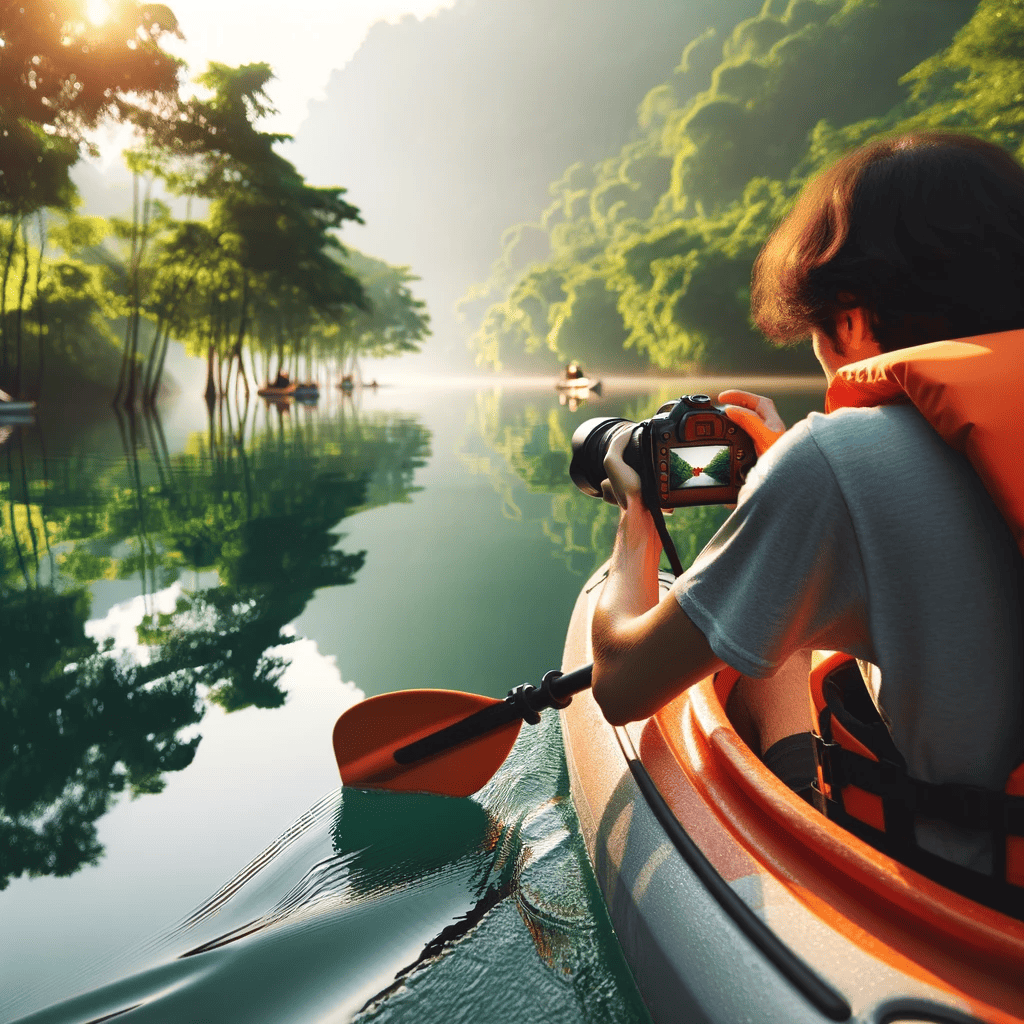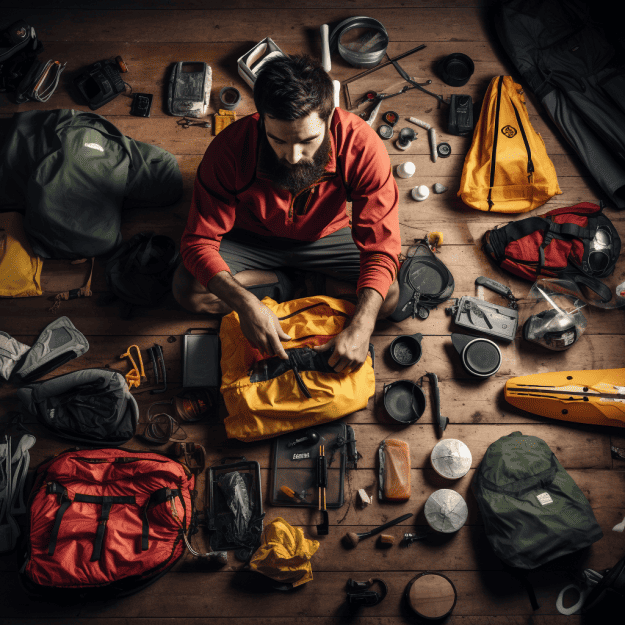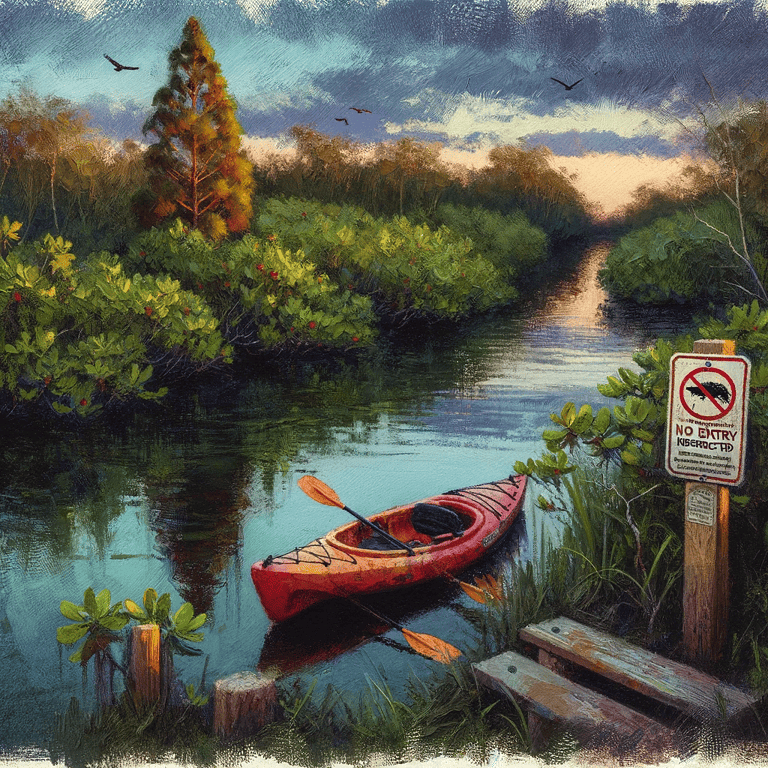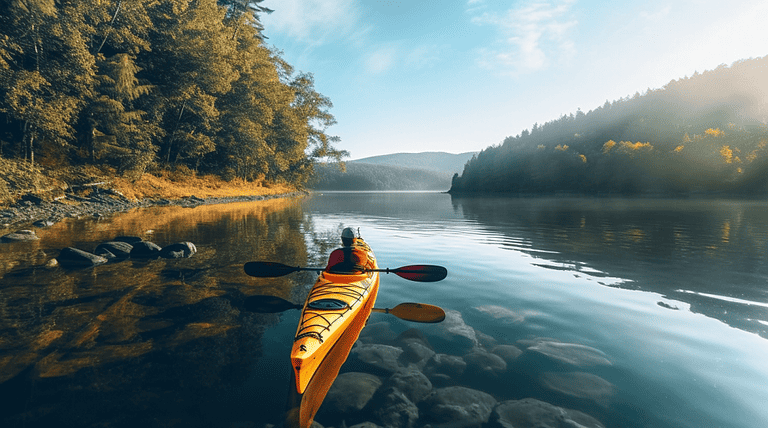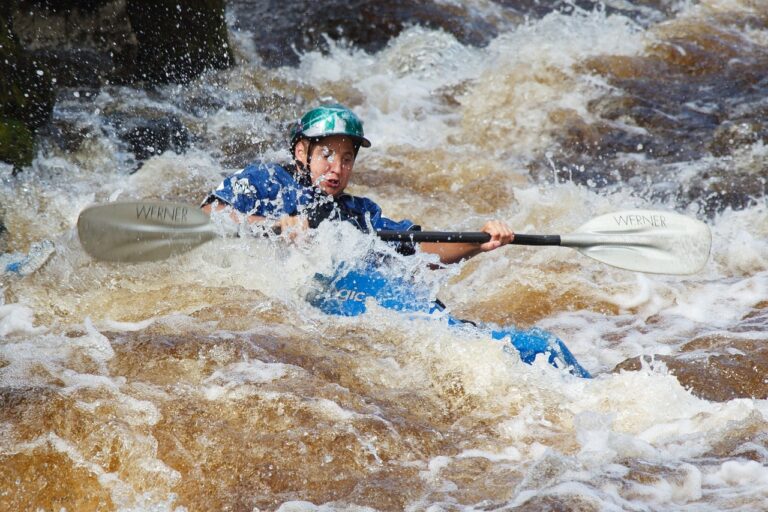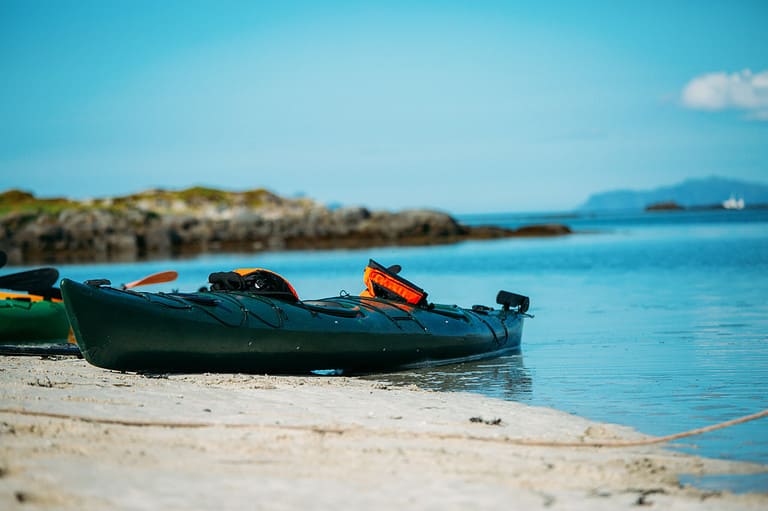How To Learn To Kayak
Congratulations on making the exciting decision to delve into the world of kayaking! Let’s get started on the process how to learn to kayak. A thrilling and rewarding adventure awaits you, where you’ll experience the sheer joy of gliding through water with finesse. We understand that stepping into something new can be a bit intimidating, but rest assured, you’re in good hands! In this comprehensive article, we’ll be your trusty companions, guiding you every step of the way as you master the art of kayaking.
Discover the Thrill of Kayaking: Prepare to be enchanted by the magic of kayaking as you embark on an unforgettable journey. Picture yourself gracefully navigating through serene waters, surrounded by the beauty of nature. The tranquility of the water and the harmony of your strokes will make you feel truly at one with the elements. Whether you choose to explore tranquil lakes, meandering rivers, or daring rapids, kayaking promises a sense of adventure and freedom that few other activities can match.
A Guided Path to Mastery: We know that the beginning can be both exciting and overwhelming. That’s why we’ve crafted a step-by-step guide to help you master the foundational techniques of kayaking. From learning the correct posture and paddling techniques to understanding how to maneuver with ease, you’ll gain the confidence to tackle any water body with grace and skill. Our practical tips and expert advice will make your learning journey smooth and enjoyable.
Unraveling the Equipment Puzzle: Kayaking is an art, and every artist needs the right tools. Let us demystify the world of kayaking equipment for you. From choosing the perfect kayak that complements your style and needs to selecting the right paddle that becomes an extension of your arms, we’ve got you covered. Understanding the essentials and investing in quality gear will elevate your kayaking experience to new heights.
Safety: Our Top Priority: As you embark on your kayaking adventure, safety is our utmost concern. We’ll equip you with essential safety guidelines and practices to ensure your well-being on the water. Learning to read water conditions, recognizing potential hazards, and navigating with caution will be second nature to you. Remember, a well-prepared and vigilant kayaker enjoys the freedom of the water to the fullest.
Embrace the Kayaker’s Spirit: Beyond the physical aspects of kayaking lies a deeper connection with nature and oneself. Allow the rhythmic motion of your paddling to be a form of meditation, allowing you to find solace and clarity amidst the serene surroundings. Unleash your inner adventurer and explore hidden corners, secret coves, and breathtaking vistas that can only be discovered from the water. Your kayak will become the gateway to a world of exploration and wonder.
So, my fellow adventurer, prepare to embark on a journey that will not only introduce you to the art of kayaking but will also open up a whole new world of possibilities and experiences. We’re here to inspire and support you as you immerse yourself in the wonderful world of kayaking. Grab your paddle, embrace the excitement, and let’s set sail together on this extraordinary voyage of discovery!
Key Takeaways
- Joining kayaking communities and clubs can provide access to valuable information about kayaking spots and opportunities to participate in kayak races.
- Kayaking communities and clubs offer a chance to connect with like-minded enthusiasts and regular group outings for paddling and exploration.
- Experienced members of kayaking communities and clubs share insider knowledge about detailed descriptions of kayaking spots, water conditions, hazards, and recommendations for suitable places to kayak.
- Participating in kayak races allows for testing and improving skills, connecting with other passionate paddlers, building confidence through competition, and enhancing technique and endurance.
Understanding Kayaking Equipment
Understanding the different types of kayaking equipment is essential for beginners. When starting out, it’s important to choose appropriate clothing that will keep you comfortable and protected during your kayaking adventures. Opt for quick-drying materials such as nylon or polyester, as they will help wick away moisture and prevent chafing. Additionally, consider wearing a hat or sunglasses to shield yourself from the sun’s rays and a waterproof jacket in case of unexpected rain.
Equally important is selecting the right kayak for your needs. There are various types available, each designed for specific purposes. Sit-on-top kayaks are great for beginners as they offer stability and ease of use. They have an open cockpit which allows you to easily get in and out of the kayak without feeling trapped. On the other hand, sit-in kayaks provide better protection from water splashes and are ideal for more advanced paddlers who want to tackle rougher waters.
When choosing a kayak, also consider its length and width. Longer kayaks tend to be faster but less maneuverable, while shorter ones offer better maneuverability but sacrifice speed. As a beginner, starting with a kayak around 10-12 feet long with a moderate width is recommended.
Now that we have covered understanding kayaking equipment, let’s move on to mastering basic kayaking techniques. Learning how to paddle efficiently, perform strokes correctly, and navigate through different water conditions are crucial skills every novice paddler should acquire.
Incorporating these fundamental techniques will allow you to explore new waters and enjoy all that kayaking confidently has to offer!
Mastering Basic Kayaking Techniques
To become proficient in kayaking, it’s essential to grasp fundamental techniques. Mastering basic kayaking techniques is the key to enjoying this exhilarating water sport while staying safe. Here are some important skills to focus on:
- Paddle control: Proper paddle control is crucial for efficient and effective maneuvering on the water. Learn how to hold the paddle correctly, with one hand on the shaft and the other hand on the grip. Practice different paddle strokes, such as forward stroke, sweep stroke, and draw stroke, to gain better control over your kayak’s direction.
- Bracing techniques: Bracing is a technique used to prevent capsizing when your kayak starts to tip or lean too much. There are various bracing techniques you can learn, including low brace and high brace. These techniques involve using your paddle as a support against the water to maintain balance and stability.
- Edging: Edging refers to tilting your kayak slightly on its side by shifting your body weight. This helps improve stability and maneuverability in different conditions. By edging your kayak, you can navigate through waves or currents more effectively.
- Turning: Learning how to turn your kayak efficiently is essential for navigating around obstacles or changing directions swiftly. Practice different turning methods like sweep strokes or stern rudders until they become second nature.
By mastering these basic kayaking techniques, you’ll be well-prepared for exciting adventures on the water. However, it’s also important to remember that safety should always be a priority when kayaking. In our next section about learning safety guidelines, we will discuss essential precautions that every kayaker should follow without compromising their enjoyment of this incredible sport.
Learning Safety Guidelines
Make sure you follow safety guidelines and prioritize your well-being while enjoying the exhilarating sport of kayaking. One of the most important safety measures to take is wearing a life jacket while kayaking. A life jacket can save your life in case of an unexpected capsize or accident on the water. It provides buoyancy and keeps you afloat, even if you are tired or injured. Always choose a life jacket that fits properly and has a U.S. Coast Guard approved rating.
In addition to wearing a life jacket, it is essential to learn basic rescue techniques in kayaking. These skills can help you assist yourself or others in case of an emergency situation on the water. One such technique is the ‘T-rescue.’ This involves flipping your kayak upside down with the help of another paddler, emptying out any water inside, and then flipping it back over again.
Another important rescue technique is called ‘self-rescue.’ This involves learning how to re-enter your kayak after capsizing without assistance from another person. There are different methods for self-rescue depending on whether you have a sit-on-top kayak or a sit-inside kayak.
By understanding these basic rescue techniques and practicing them regularly, you will be better prepared to handle unexpected situations while kayaking.
Now that we’ve covered safety guidelines and rescue techniques, let’s transition into exploring different types of kayaking without missing a beat.
Exploring Different Types of Kayaking
When it comes to kayaking, there are different types of experiences you can have on the water. Recreational kayaking is perfect for those who want a peaceful and leisurely paddle on calm lakes or slow-moving rivers. Sea kayaking, on the other hand, involves exploring coastal areas and open waters, where you can witness breathtaking views and encounter marine wildlife. If you’re looking for an adrenaline rush, whitewater kayaking allows you to navigate through fast-flowing rapids and challenging river obstacles. Each type offers its own unique adventure and requires specific skills and equipment.
Recreational Kayaking
Start by renting a recreational kayak to get a feel for paddling on calm waters. Recreational kayaking is a great way to enjoy the outdoors and explore nearby lakes, ponds, or slow-moving rivers. These kayaks are stable, easy to maneuver, and designed for beginners. Once you’re comfortable with the basics of paddling, you can try your hand at kayak fishing. Many recreational kayaks come with built-in rod holders and storage compartments for your gear. It’s a fun and rewarding activity that allows you to combine your love of kayaking with the thrill of catching fish. As you gain more experience in recreational kayaking and kayak fishing, you may find yourself wanting to venture into sea kayaking. This form of kayaking offers new challenges and opportunities for exploration in open water environments without losing sight of land.
Sea Kayaking
To fully enjoy the thrill of sea kayaking, you should ensure that you have the necessary safety equipment and knowledge of how to handle rough waters. 1) Start by investing in proper kayaking gear, including a sea kayak specifically designed for open water conditions, a paddle leash to prevent losing your paddle in strong currents, and a personal flotation device (PFD) that fits comfortably. 2) Research and choose suitable kayaking destinations with calm waters or gentle currents to build your confidence before venturing into more challenging areas. Popular sea kayaking destinations include coastal regions such as British Columbia’s Gulf Islands or Maine’s Acadia National Park. 3) Take a sea kayaking course or join a guided tour to learn essential skills like self-rescue techniques and navigation. These experiences can provide valuable knowledge and increase your comfort level on the water. As we move onto whitewater kayaking, it’s important to understand the different challenges it presents while maintaining our enthusiasm for this exciting sport.
Whitewater Kayaking
For a thrilling adventure, make sure you have the necessary gear and knowledge to handle the challenges of whitewater kayaking. Whitewater kayaking involves navigating fast-moving rivers with rapids and obstacles, requiring specific techniques and equipment. To successfully navigate through whitewater, it is essential to understand river dynamics, such as identifying eddies for rest stops or scouting rapids for safe passage. Additionally, proper paddling techniques like bracing and rolling are crucial skills to master in order to stay upright in turbulent waters. It is also important to have appropriate safety gear such as helmets and personal flotation devices (PFDs) for protection. Check out the table below for a breakdown of key equipment needed:
| Equipment | Description |
|---|---|
| Kayak | A small boat designed for maneuvering in whitewater rivers |
| Paddle | Used to propel and steer the kayak |
| Helmet | Protects your head from potential impact with rocks or other objects |
| PFD | Keeps you afloat if you fall into the water |
To enhance your learning experience, consider joining kayaking communities and clubs where you can learn from experienced paddlers and participate in group outings on various rivers.
Next topic: ‘Joining Kayaking Communities and Clubs’
Joining Kayaking Communities and Clubs
Joining kayaking communities and clubs can be a great way to meet fellow paddlers and gain valuable insights. When it comes to finding the best kayaking spots, these communities are a treasure trove of information. Experienced members often share their favorite locations, providing detailed descriptions of the water conditions, scenery, and any challenges or hazards to look out for. This insider knowledge can save you time and effort in searching for suitable places to kayak.
In addition to discovering new spots, being part of a kayaking community also opens up opportunities to participate in kayak races. These events not only test your skills but also offer a chance to connect with other enthusiasts who share your passion for the sport. Kayak races come in various formats, from short sprints on flatwater to long-distance endurance challenges on whitewater rapids. Participating in these races can help improve your technique and build your confidence as you compete against others.
When you join a kayaking club or community, you’ll find that there is usually something for everyone. Whether you’re a beginner looking for guidance or an experienced paddler seeking camaraderie, there will be like-minded individuals who are happy to welcome you into their fold. Many clubs organize regular group outings where members paddle together, exchange tips and tricks, and have fun exploring new waters.
To get started with joining kayaking communities and clubs, search online for local organizations or ask at outdoor sports stores for recommendations. Don’t hesitate to reach out and introduce yourself – remember that everyone was once a beginner too! So take advantage of the collective wisdom within these groups, learn from their experiences, and enjoy the journey of becoming a skilled kayaker while making lasting friendships along the way.
Frequently Asked Questions
Are there any age restrictions for learning to kayak?
There are generally no age restrictions for learning to kayak. It is a sport that can be enjoyed by people of all ages, including children and seniors. In fact, there are many benefits to starting at a young age. Learning to kayak at a young age helps develop important motor skills, coordination, and balance. It also instills a love for the outdoors and promotes an active lifestyle from an early age.
Can I kayak alone or is it recommended to always have a partner?
When it comes to kayaking, going solo can be quite liberating. You can paddle at your own pace and explore new places without any restrictions. However, it’s always recommended to have a partner for safety reasons. They can assist in case of emergencies or lend a helping hand when needed. Additionally, kayaking with a partner allows for shared experiences, camaraderie, and the opportunity to learn from each other’s expertise on the water.
What should I wear while kayaking and what gear should I bring?
When kayaking, it’s important to dress appropriately and have the right gear. For kayak clothing, wear quick-drying materials like neoprene or synthetic fabrics that provide insulation even when wet. Don’t forget a hat, sunglasses, and sunscreen for sun protection. As for essential kayak gear, bring a life jacket, paddle leash, bilge pump, and a dry bag to keep your belongings safe. These items will ensure your comfort and safety while out on the water.
How do I choose the right kayak for my skill level and intended use?
To choose the right kayak for your skill level and intended use, prioritize kayak safety. Consider factors like stability, maneuverability, and weight capacity. For beginners, a wider and shorter kayak offers more stability. As you gain experience, you can opt for sleeker models with better maneuverability. Also, don’t forget to invest in kayak accessories such as life jackets, paddles, and dry bags to ensure a safe and enjoyable kayaking experience.
Are there any specific rules or regulations I should be aware of when kayaking in different bodies of water?
When it comes to kayaking in different bodies of water, it’s important to familiarize yourself with the specific rules and regulations. Kayaking safety should always be a top priority. This means wearing a properly fitting life jacket, checking weather conditions before heading out, and staying aware of your surroundings. Additionally, practicing good kayaking etiquette is crucial for a positive experience on the water. This includes respecting others’ personal space, avoiding loud noises or excessive splashing, and leaving no trace behind.
Conclusion
In conclusion, learning to kayak is an exhilarating adventure that anyone can embark on. By understanding the equipment and mastering basic techniques, you’ll be gliding through the water in no time. Safety should always be a priority, so make sure to learn and follow the guidelines. Don’t forget to explore different types of kayaking to find your niche. And remember, joining kayaking communities and clubs will enhance your skills and provide endless opportunities for fun-filled expeditions. So grab your paddle, dive in, and let the river carry you away on this wild journey! It’s like discovering a hidden treasure chest of endless thrills!

